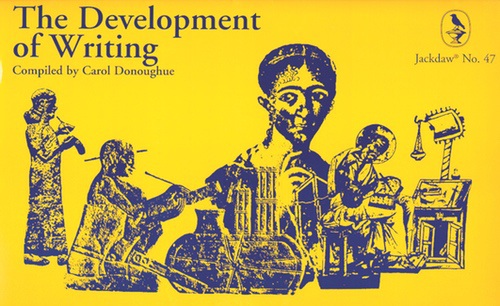
The Development of Writing
Introduce your students to our history of writing, from man's early attempts at communication by painting on cave walls to the variety of alphabets in use throughout the world today. The key points of the development of writing parallel the development of civilization. Students will find the map of language and alphabet development especially informative and intriguing. They will view the Rosetta stone up-close and personal, and marvel at early letter-writing on papyrus. Essays cover writing and communication of the Sumerians, Egyptians, and Romans, as well as manuscripts from the Medieval period. Your students will develop a new appreciation for what we easily take for granted every day. This portfolio includes a Study Guide with reproducible student activities. 7 Illustrated Broadsheet Essays: * Cavemen and Picture Writing * The Sumerians * The Egyptians * The First Alphabet * The Romans * Medieval Manuscripts * Handwriting Since the Invention of Printing 11 Primary Source Documents: * Map showing areas in which various languages developed, including a chart of the development of our alphabet and a table showing the evolution of various script * Sumerian 'Medical' tablet * The Rosetta Stone from Egypt * Detail from the tomb of Thethi, an Egyptian courtier * A Greek letter written on papyrus * Malpas Diploma, awarded to a Roman soldier * Page from Luttrell Psalter * Page from The Pen's Excellencie: or The Secretaries Delight, 1618 * Page from Webb's Useful Penmanship, 1796 * Page from A New Copy Book of the Small Italian Hand, 1727 * Page from Edward Daniel Riche's Copy Book, 1840








